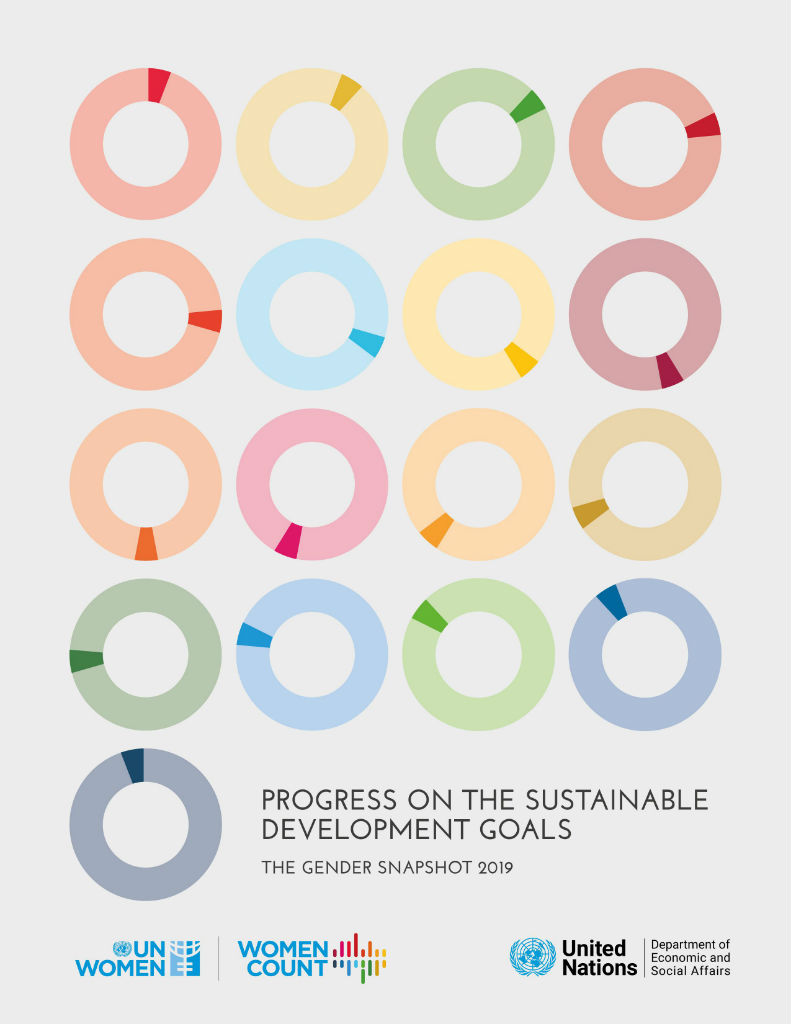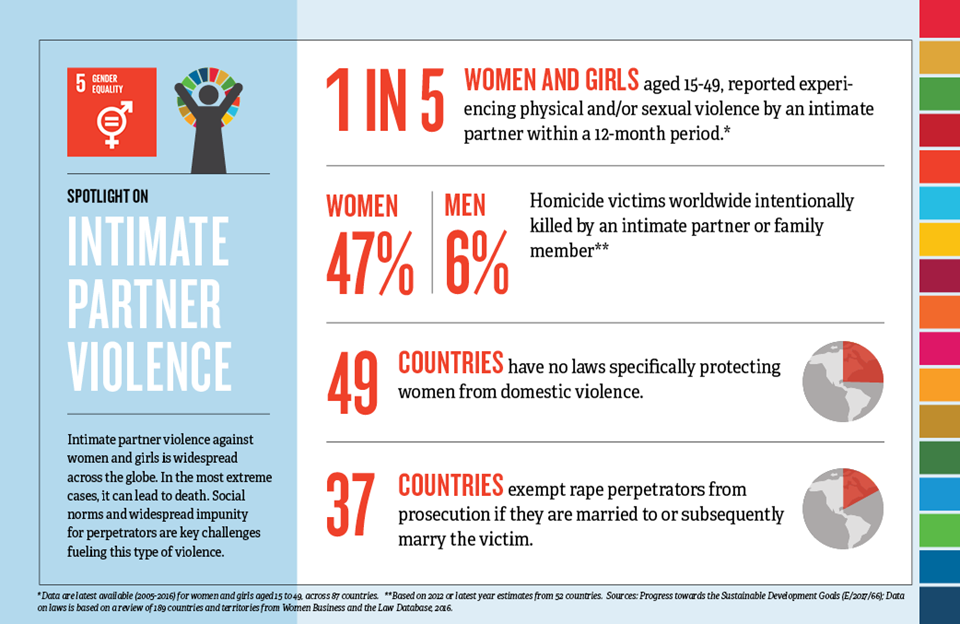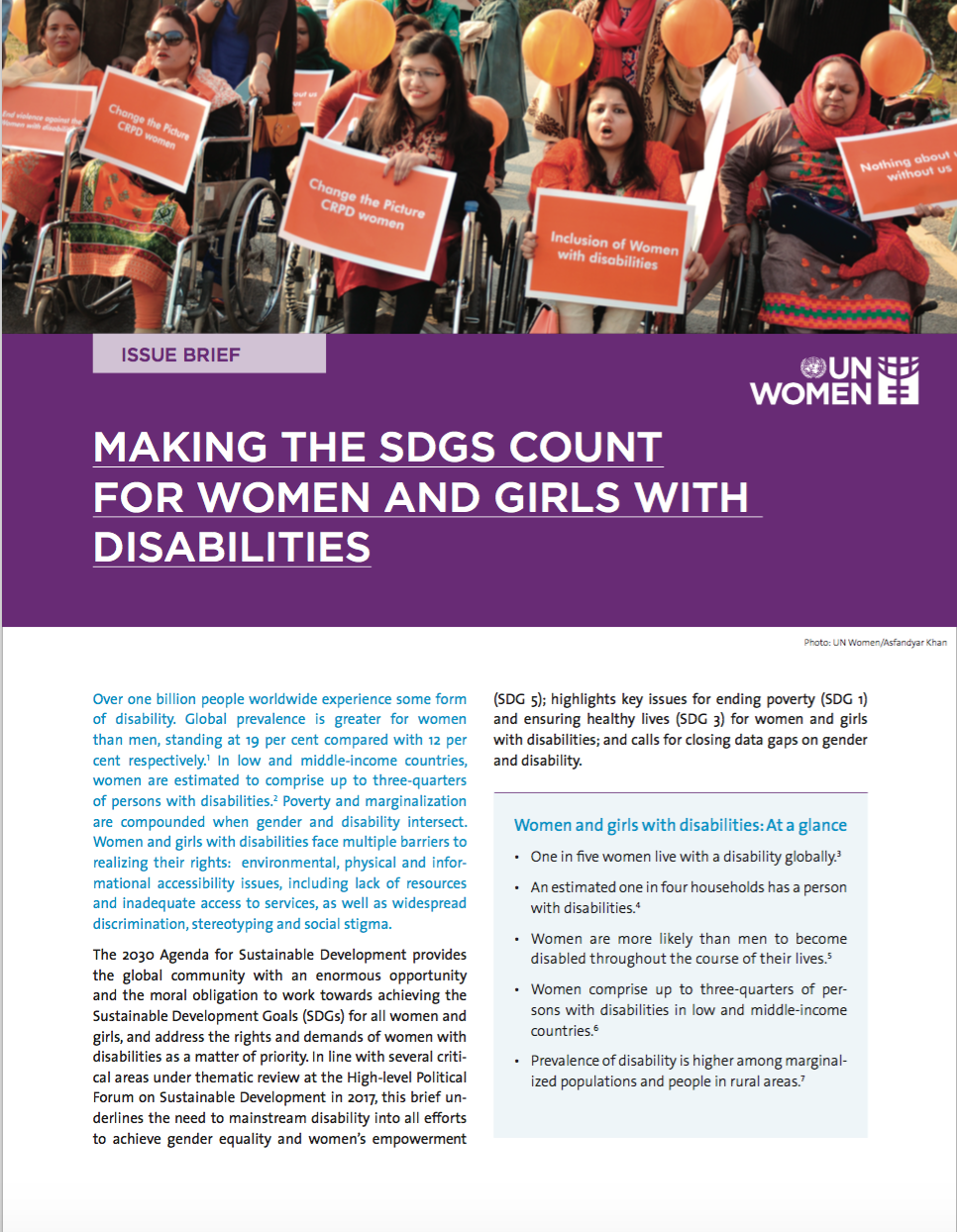December 2022 - You are accessing an archived version of our website. This website is no longer maintained or updated. The Sustainable Development Knowledge Platform has been migrated here: https://sdgs.un.org/
December 2022 - You are accessing an archived version of our website. This website is no longer maintained or updated. The Sustainable Development Knowledge Platform has been migrated here: https://sdgs.un.org/


Where women and girls stand against select SDG targets. Click here for more infographics.

Making the SDGs count for women and girls with disabilities

Gender inequality persists worldwide, depriving women and girls of their basic rights and opportunities. Achieving gender equality and the empowerment of women and girls will require more vigorous efforts, including legal frameworks, to counter deeply rooted gender-based discrimination that often results from patriarchal attitudes and related social norms.
Source: Report of the Secretary-General, "Progress towards the Sustainable Development Goals", E/2017/66
While some forms of discrimination against women and girls are diminishing, gender inequality continues to hold women back and deprives them of basic rights and opportunities. Empowering women requires addressing structural issues such as unfair social norms and attitudes as well as developing progressive legal frameworks that promote equality between women and men.
Source: Report of the Secretary-General, The Sustainable Development Goals Report 2018
While some indicators of gender equality are progressing, such as a significant decline in the prevalence of female genital mutilation and early marriage, the overall numbers continue to be high. Moreover, insufficient progress on structural issues at the root of gender inequality, such as legal discrimination, unfair social norms and attitudes, decision-making on sexual and reproductive issues and low levels of political participation, are undermining the ability to achieve Sustainable Development Goal 5.
Source: Report of the Secretary-General, Special edition: progress towards the Sustainable Development Goals